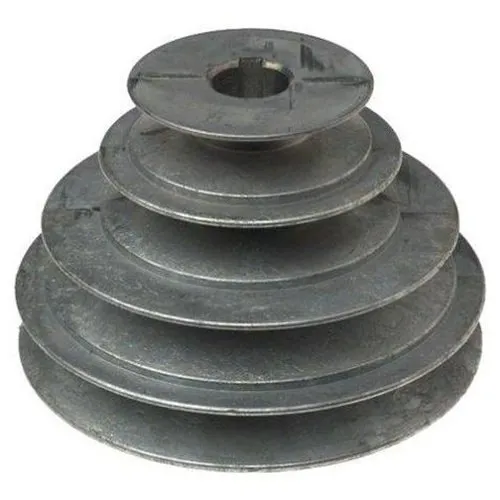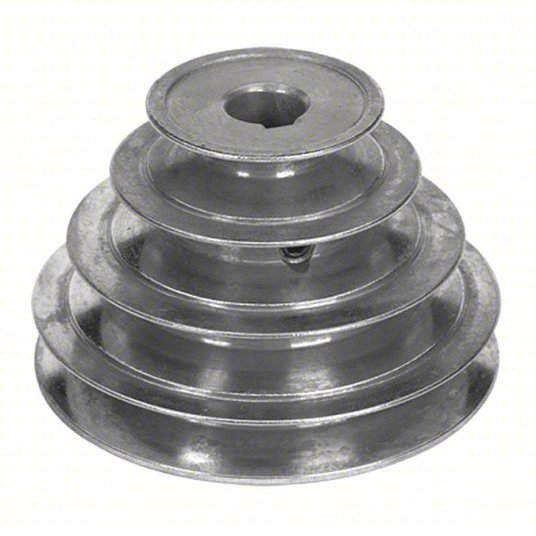Product Description
ZheJiang Xihu (West Lake) Dis. CHINAMFG Technology Co., Ltd (FHZL) is 1 of China’s earliest companies engaging in researching 3D printing technology and commercialize the technology. The company successfully developed the advanced technology based on the 3D sand printing and applies the technology into China’s foundry industry.
CHINAMFG has grown into a comprehensive high-tech company that could offer complete R&D & manufacturing, sales of 3D sand printing equipment, 3D printing complex metal parts, 3D printing combined with gravity and low pressure casting of traditional metal mold, CNC precision machining, customization of rapid manufacturing for 3D sand mold (core) printing, application of 3D data processing and 3D digital integrated technology, various 3D printing consumables, etc.
The cold core (box) manufacturing technology for 3D printing of micro-droplet jet sand mold was first developed in China, acquired multiple patent certification, this unique technology is superior and compatible with the conventional process. It would greatly changes the conventional production cycle and manufacturing technology in foundry industry.FHZL has more than 10 years of rapid casting & processing experience, over 1000 different types of product development cases per year, provided rapid manufacturing services to nearly 400 large enterprises both domestic and abroad which were widely used in automotive, pump, valve, machinery, mining machinery, construction machinery, vessel, aviation, aerospace, new energy, rail transit, casting mold and many other industries.
Why work with FHZL?
FHZL brand and reputation:
The national High-tech Enterprise in China;
The foundry Industry Association in ZheJiang Province;
The 5A Association of Automobile Industry in HangZhou City;
The listed company on stock market(stock code:834914).
Strict quality control system:
Included incoming inspection, sample inspection, process inspection and delivery inspection.
IFAT 16949 certificate, CE certificate and ISO 14001 and ISO 9001 certificated factory.
Lower cost and shortened delivery time:
patented new technology PCM (patternless casting manufacturing) has been applied to our manufacturing which improved the traditional casting efficiency rapidly.
No need of mold, casting pattern be formed 1 time, save the mold cost and mold making time.
More flexible during process:
In case of any failure on the design, PCM technology just need to modify the 3D drawings and restart, no mold modification cost.
What’s the technical process for casting?
High precision CNC machines and inspection devices.
Our Advantages
(1) Competitive price, all products are casted and machined in our factory, shipped directly to customer.
(2) Reliable quality, IATF16946 certified casting manufacturer, we have strict control about quality.
(3) Professional, we focus on production of Auto Parts for more than 10 years.
(4) Fast shipment, we have a efficient management system, several automatic casting lines, and more than 10 machining lines.
(5) Excellent service, our sales team has more than 10 years’ experience in oversea market, we know you better.
(6) Flexible production, we can customize the product according to your drawing.
FAQ
1. Are you a factory or trading company?
We are a IATF16949 certified factory specializing in producing Auto parts. We cast and machine the parts for more than 10 years.
2. Can you customize the parts according to the drawing?
We have professional technical dept., we are able to customize your parts according to the drawings.
3. Can you supply samples?
We can supply the samples, but you need to bear the development and delivery cost.
4. Do you have a min order quantity?
We don’t have a min order quantity, we can send you the parts according to your drawings
5. What is the period of sample production?
It will take 15~25 days to develop new product.
/* January 22, 2571 19:08:37 */!function(){function s(e,r){var a,o={};try{e&&e.split(“,”).forEach(function(e,t){e&&(a=e.match(/(.*?):(.*)$/))&&1
| File Format: | STEP, IGES |
|---|---|
| Nozzle Number: | 5 |
| Connection: | USB |
| Precision: | 100-200mu |
| Thickness: | 150-200mu |
| Printer Material: | Quartz Sand, Resin |
| Customization: |
Available
| Customized Request |
|---|

What is the significance of proper alignment and tensioning in step pulley systems?
Proper alignment and tensioning are crucial for the optimal performance and longevity of step pulley systems. Here’s why they are significant:
1. Efficient Power Transmission:
Proper alignment ensures that the step pulleys and the belts or cables are correctly positioned relative to each other. This alignment allows for efficient power transmission from the driving pulley to the driven pulley. When the pulleys are aligned, there is minimal slippage or energy loss, resulting in efficient transfer of power and improved overall system performance.
2. Minimized Wear and Damage:
Correct tensioning of the belts or cables is essential to prevent excessive wear and damage. When the tension is too loose, the belts or cables may slip, causing accelerated wear and heat generation. On the other hand, if the tension is too tight, it can lead to increased stress on the pulleys, bearings, and belts or cables, potentially causing premature failure. Proper tensioning helps maintain the optimal balance, reducing wear and extending the service life of the components.
3. Reduced Vibration and Noise:
Misalignment or improper tensioning can result in vibration and noise in the step pulley system. Vibrations can affect the overall stability of the machinery and contribute to increased wear and fatigue on the pulleys and other components. Proper alignment and tensioning help minimize vibrations, resulting in smoother and quieter operation, which is desirable for both operator comfort and the longevity of the system.
4. Prevented Belt or Cable Slippage:
Proper alignment and tensioning significantly reduce the risk of belt or cable slippage. Slippage can occur when the belts or cables lose traction with the pulleys, leading to a loss of power transmission and compromised performance. By ensuring proper alignment and tension, the risk of slippage is minimized, ensuring reliable and consistent power transfer.
5. Extended Component Life:
When step pulleys, belts or cables, and other system components are properly aligned and tensioned, they experience less stress and wear. This contributes to extended component life and reduces the frequency of replacements or repairs. Proper maintenance of alignment and tensioning helps protect the integrity of the system, minimizing the risk of sudden failures and downtime.
6. Improved Efficiency and Productivity:
By maintaining proper alignment and tensioning, step pulley systems operate at their optimum efficiency. The ability to transfer power smoothly and reliably enhances the productivity of the machinery or equipment. It allows for accurate speed control and consistent performance, leading to improved production output and quality.
In summary, proper alignment and tensioning are of utmost importance in step pulley systems. They ensure efficient power transmission, minimize wear and damage, reduce vibration and noise, prevent slippage, extend component life, and improve overall system efficiency and productivity.

What are some real-world examples of step pulley applications in various industries?
Step pulleys find numerous applications across various industries. Here are some real-world examples of step pulley applications:
1. Machinery and Manufacturing:
– Drill Presses: Step pulleys are commonly used in drill presses to provide variable speed control for drilling operations. Different pulley positions allow operators to select the appropriate speed for drilling various materials.
– Lathes: Step pulleys play a crucial role in lathes by enabling variable speed control for turning operations. They allow operators to adjust the rotational speed of the workpiece to achieve desired cuts and surface finishes.
– Milling Machines: Step pulleys are utilized in milling machines to control the speed of the cutting tool. By changing the position of the belt on the pulleys, operators can achieve different cutting speeds for various materials and milling operations.
2. Automotive Industry:
– Automotive Transmissions: Step pulleys, particularly variable speed pulleys, are used in some automotive transmissions to provide seamless and efficient speed control. They allow for smooth acceleration and optimal power distribution.
– Engine Accessories: Step pulleys are employed in various engine accessories such as water pumps, alternators, and superchargers. They enable these components to operate at different speeds, optimizing their performance and power consumption.
3. Exercise Equipment:
– Treadmills: Step pulleys with variable speed functionality are used in treadmills to offer adjustable running speeds. Users can select different speed settings based on their fitness levels and workout goals.
– Stationary Bikes: Step pulleys are utilized in stationary bikes to allow users to adjust the resistance and simulate different biking terrains. By changing the belt position on the pulleys, users can vary the pedaling effort required.
4. Industrial Machinery:
– Conveyor Systems: Step pulleys are employed in conveyor systems to control the speed at which materials or products move along the conveyor belt. Different pulley positions enable speed adjustments to match production requirements.
– Packaging Machines: Step pulleys are used in packaging machines to regulate the speed of the packaging process. They ensure precise and synchronized movements of various components, such as feeding systems, sealing mechanisms, and labeling devices.
5. Printing Industry:
– Printing Presses: Step pulleys are utilized in printing presses to control the speed of the printing cylinders or rollers. They enable precise control over the ink transfer and paper feeding processes, ensuring accurate and high-quality printing results.
6. Agricultural Equipment:
– Harvesters: Step pulleys are employed in combine harvesters to adjust the rotational speed of cutting heads and threshing mechanisms. This allows for efficient crop harvesting and processing.
– Irrigation Systems: Step pulleys are used in irrigation systems to control the speed of pumps or water distribution mechanisms. They allow for precise control over water flow rates and irrigation patterns.
These are just a few examples of step pulley applications in various industries. The versatility and adaptability of step pulleys make them valuable components in a wide range of machinery and equipment, enabling efficient speed control and enhancing overall performance.

What is a step pulley, and how does it function in mechanical systems?
A step pulley is a type of pulley that consists of multiple grooved steps or levels of varying diameters on a single pulley wheel. It is commonly used in mechanical systems to provide different speed ratios and adjust the rotational speed of driven components. Here’s how a step pulley functions:
1. Speed Variation:
The main function of a step pulley is to provide different speed ratios by changing the effective diameter of the pulley. The belt or chain used in the system can be moved from one step to another, altering the speed at which power is transmitted from the driving pulley to the driven pulley.
2. Multiple Speed Options:
Each step on a step pulley corresponds to a specific diameter, and thus, a specific speed ratio. By selecting different steps, the rotational speed of the driven component can be adjusted. This allows for multiple speed options without the need for complex transmission systems.
3. Manual Adjustment:
Step pulleys are manually adjustable, meaning the operator can change the speed ratio by physically moving the belt or chain to a different step on the pulley. This adjustability makes step pulleys versatile and suitable for applications where speed changes are required.
4. Mechanical Advantage:
Step pulleys can also provide mechanical advantage in certain applications. By selecting a smaller diameter step, the pulley can effectively increase torque while reducing the rotational speed. This can be advantageous in systems where high torque is required, such as in milling machines or lathes.
5. Simplified Design:
Step pulleys offer a relatively simple and cost-effective solution for speed variation in mechanical systems. Compared to more complex variable speed drives, step pulleys have fewer moving parts and are easier to maintain and repair.
6. Common Applications:
Step pulleys find applications in various machines and equipment, including drill presses, lathes, milling machines, and other power transmission systems where adjustable speeds are necessary.
It’s important to note that step pulleys are limited to discrete speed ratios determined by the available steps on the pulley. For more continuous speed control, other types of transmission systems like variable speed drives or electronic control systems may be required.


editor by CX
2024-04-23
